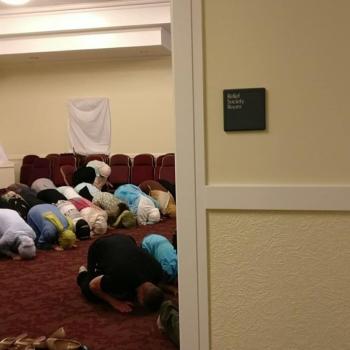The Woman Taken in Adultery (7:53-8:11)
This is one of the more poignant stories in John, which all of us can relate to: the hope for a loving God who will forgive our sins. Unfortunately, it was not part of the original Gospel of John. For one thing, it breaks the coherence between the end of chapter seven, and 8:12, where the discourse on messianic Sukkot symbolism continues. More importantly, the story is not found in the earliest manuscripts of John in Greek, Syriac, Coptic, or Latin.
On the other hand, this does not necessarily mean that this story is pious fiction. Eusebius (writing in the early 4th century), states that the early-2nd century Christian author Papias said that the story of the woman taken in adultery was found in the now lost Gospel of the Hebrews, which itself dates to the early 2nd century at the latest (Church History 3.39.17). Minimally it is a very early part of the once extensive oral traditions about Jesus, most of which are now lost. It is not clear why someone would have inserted this particular story at this point in John. But what is clear is that this story reflects the overall teachings of Jesus on repentance and forgiveness. Metzger concludes that "the account has all the earmarks of historical veracity."
In any event, the story certainly has historical verisimilitude. That is to say, it reflects the type of event that could have happened in first-century Judea. A woman who had been caught in adultery was brought before Jesus for a type of summary justice. (One wonders where the man was. Perhaps he escaped, leaving his paramour to suffer the consequences alone. Or perhaps he had already been punished.) The Law in the Hebrew Bible is explicit on the consequences of adultery—death by stoning. "If a man commits adultery with the wife of his neighbor, both the adulterer and the adulteress shall surely be put to death" (Lev. 20:10; see also Dt. 22:22-24; Ezek. 16:38-40).
The Pharisees, viewing Jesus as having a lax interpretation of the Law, were apparently attempting to trap Jesus into a public repudiation of the Law's death penalty (8:6). Jesus neither judged the matter at hand, nor did he repudiate the Law. Rather he simply said, "Let him who is without sin among you cast the first stone at her" (8:7). The accusers then slowly dispersed. (Alas, all of us know some people who would have been perfectly happy to cast the first stone.) Jesus thus weighs us in the delicate balance between justice and mercy, between self-righteousness and self-reflection. The fundamental principle at issue here is described elsewhere in the gospels: "blessed are the merciful, for they shall receive mercy" (Mt. 5:7), and "for if you forgive others their trespasses, your heavenly Father will also forgive you" (Mt. 16:14). Repentance and forgiveness lie at the foundation of Jesus' gospel.
Although it is not explicit in John, the subtext of this story may be Mary, the mother of Jesus. Pregnant but unmarried, Mary, too, could have been subject to the Law's demand, and could have been stoned for adultery had not Joseph agreed to marry her and raise her child as his own. If the dictates of the Law had been carried out, Mary would have been stoned, and the unborn Jesus would have died with her.
The Light of the World (8:12-20)
When Jesus proclaims "I am the light of the world" (egō eimi to phōs tou kosmou) (8:12), he is expounding one of the fundamental metaphors of John's gospel. In its immediate context, Jesus is speaking in the temple during the festival of Sukkot. It is usually called the "treasury" (gazophulakion) (8:20), a place by the Court of the Women where the donation chests were kept, which was also the setting for the story of the widow's mite (Mk. 12:42-43). This is important to note because of the Sukkot ritual of the lighting of huge lamp-stands in the Court of the Women, due east of the altar and temple. The Mishnah describes this ritual as follows.
There were golden lamp stands there with four golden bowls on the top of them and four ladders to each lamp stand, and four youths of the priestly stock, and in their hands jars of oil holding a hundred and twenty logs [about 7.5 gallons] which they poured into the bowls. They made wicks from the worn out drawers and girdles of the priests and with them they set the lamp stands alight, and there was not a courtyard in Jerusalem that did not reflect the light of the 'House of Water-drawing' [in the Court of the Women in the temple] (Mishnah, Sukkah 5.2-3).
Jesus' declaration "I am the light of the world" (Jn. 8:12) may well have occurred at night, and should be read in the context of these towering blazing lights in the temple. One should also recognize that fire was the only source of light at night in ancient Judea, and these blazing lamp-stands would have been the brightest night light most people would ever see.





